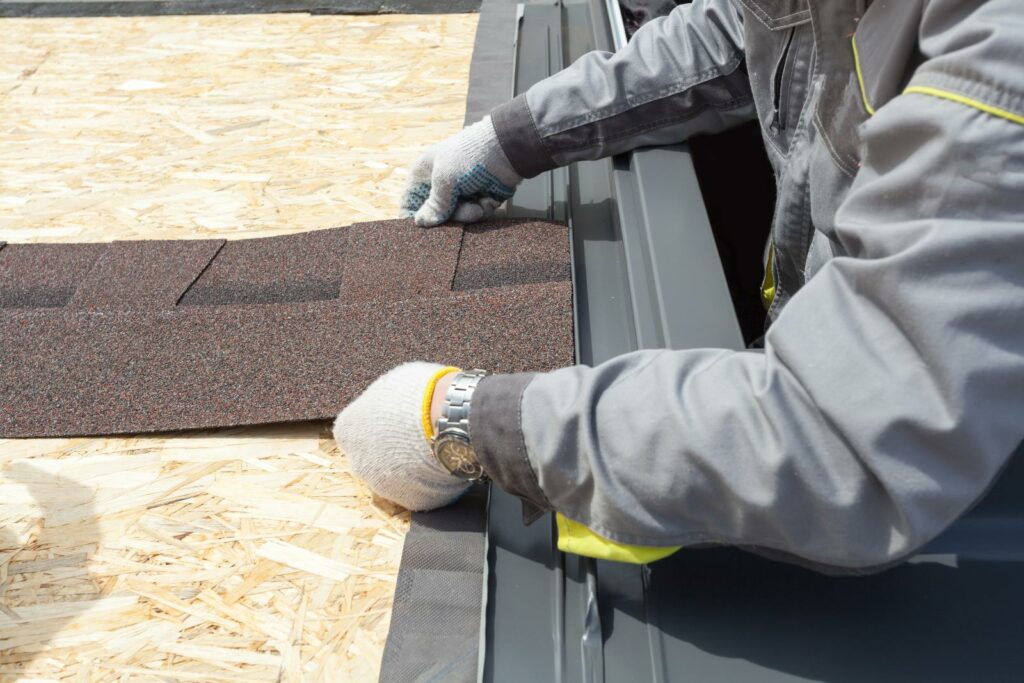While commercial roofs are designed to withstand the elements, they are also subject to constant wear and tear. The juxtaposition of their resilience and vulnerability makes regular upkeep essential.
It’s not just about fixing leaks; it’s about maintaining the roof’s overall integrity. By following the four best practices outlined in this discussion, businesses can ensure that their commercial roofs remain reliable and durable, ultimately saving them time and money in the long run.
Key Takeaways
- Regular roof inspections are essential for identifying potential issues and ensuring proper material selection.
- Prompt repairs and maintenance help prevent extensive damage and high costs by addressing issues promptly.
- Proper drainage system maintenance is crucial for preserving roof integrity and functionality through regular cleaning and inspection.
- Establishing partnerships with professional roofing contractors enables regular inspections, timely maintenance, and prevention of costly repairs.
Regular Roof Inspections
Regularly inspecting the commercial roof is essential for identifying potential issues and ensuring its long-term performance and durability. Proper roofing material selection is crucial to mitigate potential problems. The type of material used for the commercial roof significantly impacts its maintenance needs and overall longevity. For instance, a TPO (thermoplastic polyolefin) roofing system requires different maintenance compared to a metal roof. Therefore, understanding the specific requirements of the roofing material is paramount for effective preventative maintenance.
During inspections, it’s important to thoroughly examine the condition of the roofing material. This includes checking for signs of wear and tear, such as cracks, punctures, or blistering, as well as ensuring proper installation and sealing of seams. Additionally, the drainage system should be inspected to identify any blockages or inadequate water flow, which can lead to ponding and potential water damage.
Regular inspections also offer the opportunity to assess the effectiveness of previous maintenance efforts. If repairs or maintenance have been conducted, inspecting the area to ensure the work was done effectively and that no further issues have arisen is vital. This proactive approach allows for the early detection and resolution of any potential problems, ultimately preventing minor issues from escalating into major concerns.
Prompt Repairs and Maintenance
To ensure the commercial roof’s optimal performance and longevity, promptly addressing any identified issues through effective repairs and maintenance is crucial. Preventative measures play a significant role in minimizing the need for emergency response and costly repairs. Regular inspections are vital for identifying potential problems early on, but prompt repairs and maintenance are equally important. When issues are left unattended, they can escalate, leading to more extensive damage and higher repair costs.
Identifying issues during routine inspections is imperative, so address them promptly. This includes repairing damaged or deteriorating areas, clearing debris, and ensuring that drainage systems are functioning properly. Ignoring these issues can result in water infiltration, structural damage, and compromised safety.
Additionally, regular maintenance should be conducted to prolong the lifespan of the roof. This includes tasks such as cleaning gutters, removing debris, inspecting seals and flashing, and addressing any signs of wear and tear. Implementing a proactive approach to maintenance can help prevent small issues from developing into larger, more costly problems.
In the event of severe weather or unforeseen circumstances, having an emergency response plan in place is essential. This plan should outline procedures for addressing urgent repairs to minimize damage and ensure the safety of the building and its occupants.
Drainage System Maintenance
Maintaining the drainage system is essential for preserving the integrity and functionality of the commercial roof. Regular drainage system cleaning is crucial to prevent water accumulation, which can lead to leaks, structural damage, and ultimately compromise the roof’s lifespan. Schedule routine inspections to identify any clogs, debris buildup, or damage to the gutters and downspouts.
Gutter maintenance is a key aspect of drainage system upkeep. Leaves, twigs, and other debris often accumulate in the gutters, obstructing water flow. This can lead to water pooling on the roof, causing potential water damage. Therefore, clearing the gutters regularly is important, especially after storms or during the fall when leaves are prevalent. Installing gutter guards can also help prevent debris from entering and clogging the gutters, reducing the frequency of cleaning required.
In addition to cleaning, ensuring that the gutters are securely fastened and free from corrosion or damage is essential. Any signs of sagging, rust, or cracks should be addressed promptly to maintain the effectiveness of the drainage system. Downspouts should also be checked for blockages and proper alignment to direct water away from the building’s foundation.
Professional Roofing Contractor Partnerships
Partnering with a reputable professional roofing contractor is crucial for ensuring the long-term performance and integrity of a commercial roof. When selecting a roofing contractor, it’s important to consider their experience, expertise, and track record in handling commercial roofing projects. Here’s why establishing a strong partnership with a professional roofing contractor is essential:
Specialized Knowledge: Professional roofing contractors have in-depth knowledge of various roofing materials, their properties, and best practices for installation and maintenance.
Quality Workmanship: Partnering with a reputable contractor ensures that the commercial roof is installed and maintained according to industry standards, maximizing its lifespan and performance.
Warranty Coverage: A reliable roofing contractor can provide valuable insights into warranty coverage for different roofing materials and workmanship, helping the building owner make informed decisions.
Timely Maintenance: Establishing a partnership with a professional roofing contractor enables regular inspections and timely maintenance, preventing minor issues from escalating into costly repairs.
Recap
Maintaining a commercial roof is crucial for the longevity and performance of the building. By conducting regular inspections, promptly addressing repairs and maintenance, and keeping the drainage system in good condition, property owners can avoid costly damage and ensure the safety of their tenants.

